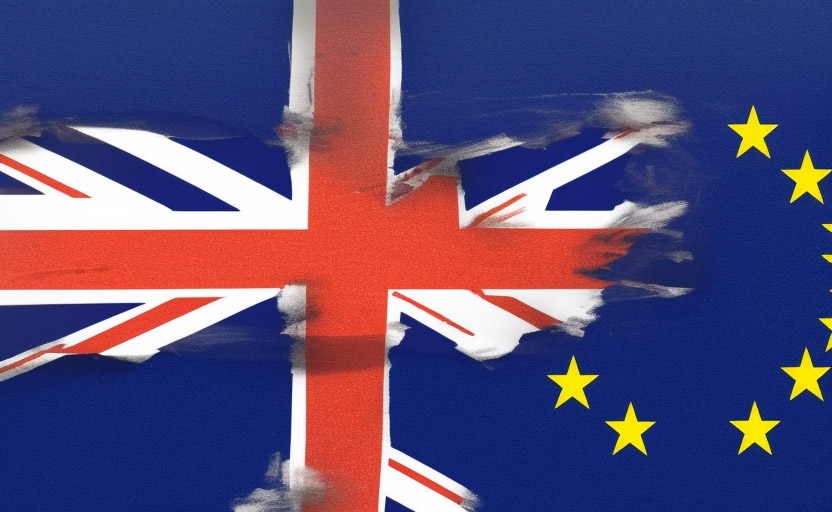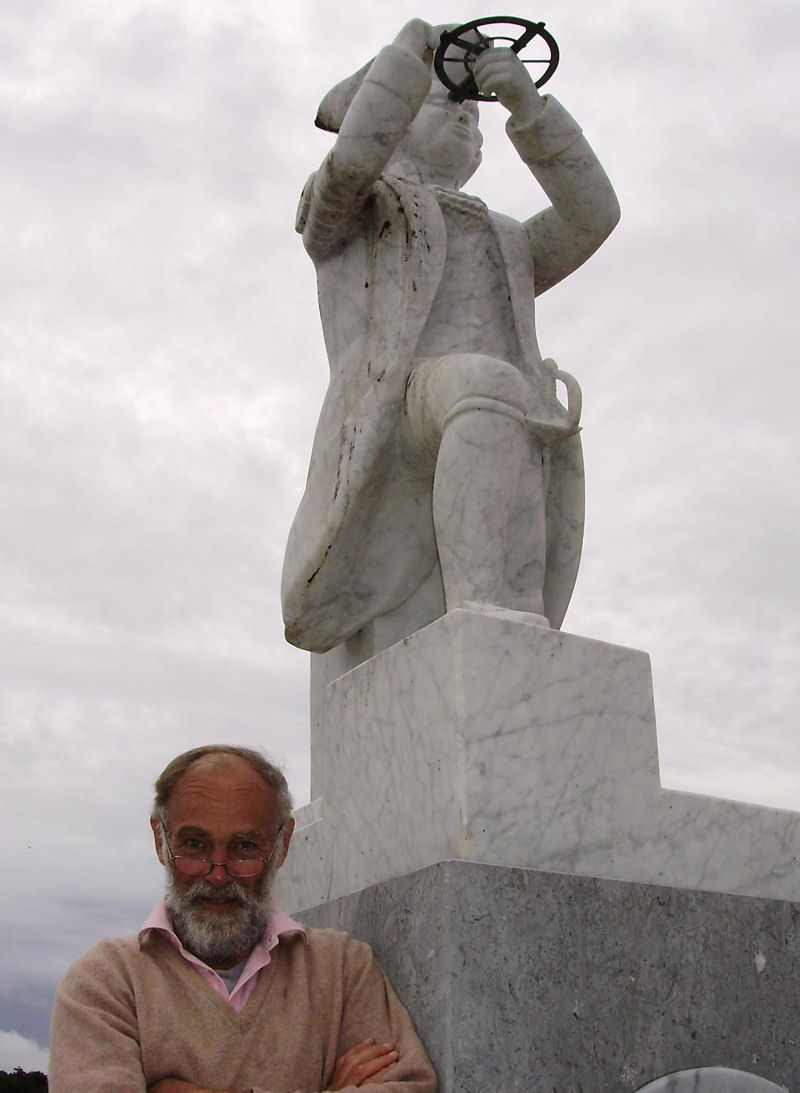Decision-Making
by Peter Emerson
Director, the de Borda Institute
Life is full of decisions. Many have been taken violently, but then the Greeks decided to do things democratically. Umm, they thought… so the science of decision-making is ancient, and the instruments are several. For some crazy reasons, however, the world still uses the most primitive tool of all: the simple, two-option, majority vote.
So ok, this article looks at decision-making; it starts with a bunch of kids choosing the veg for lunch; next, it looks at referendums and parliamentary votes; then it examines the COPs, like the recent world gathering in Dubai; and it concludes with a description of a more inclusive and more accurate preferential points system of voting.

THE KIDS AT SCHOOL
Imagine, then, the scene: the chef wants the children to choose their favourite vegetable. “Parsnips?” he asks. “Ugh,” they respond: a majority doesn’t like parsnips. And that’s that! “Broccoli?” An even bigger number doesn’t like broccoli. That’s another that. Swedes? And so it goes on, a majority against everything, (as was the case in the UK on Brexit).
“Oh alright,” says the chef, “what about the pudding?” The choice includes ice-cream, chocolate cake, blancmange… and there’s now a majority in favour of everything.
In a nutshell, asking a binary ‘Option X, yes or no?’ sort of question, a singleton, can be pretty meaningless. So some people pose a binary pairing: ‘Do you want option X or option Y?’
BREXIT
David Cameron asked a singleton: “D’you want to be in the EU, yes-or-no?” and 52% said ‘no’. Logically, he should then have asked, “D’you want to be in the EEA instead, yes-or-no?” Or the Customs Union? Or the World Trade Organisation WTO? And he might have got, yes, majorities against everything. Indeed, it’s quite possible that the majority against the EU was the smallest, and that remaining in the EU was actually the winner!
Theresa May had lots of options in her so-called indicative votes. In the first, there were eight options on the parliament’s ballot paper… and sure enough, there were majorities against everything! The biggest majority was of over 300, the smallest of only 6. So the latter, a Customs Union option, was the least unpopular… which means it was the most popular! It should have won. But it was not a majority, so it lost; every option lost; (and everybody lost).
Then came Boris. Ha; he used a pairing. Like the chef who asks, “OK, kids, d’you want my mixed veg or raw turnip?” – he chose two options: ‘his deal’ and the most unpopular of all ‘no deal’. So he won. But of course he b….y won. Any veg would have beaten raw turnips, and ‘any deal’ was bound to beat ‘no deal’. Mathematically, scientifically, that parliamentary vote meant next to nothing. Politically, of course, it meant everything. What a crazy way to run the world.

VOTES IN PARLIAMENT
The Greeks of old knew that, on a contentious question, there may indeed be a majority against everything. They therefore used pairings, for even if the outcome depends on the casting vote of the chair, a pairing always gives a definite answer, a majority in favour of something.
So imagine a very simple setting of 9 (or 9 million) people who don’t like the status quo, option D, whereupon 4 of them move a motion, option A. 3 of them would like to amend this so that it would become option B. And 2 of them go for option C.
In this scenario, all concerned – and in those days of the city states, this meant only the male citizens, women and slaves were not allowed – would first choose the more preferred amendment, B versus C; next, they would adopt or reject this amendment B/C v A to get the substantive as it’s called, and finally, they would choose either this substantive or the status quo: {(B/C or A) v D}.
Diagram 1 The Order of Voting
B
v = …..
C v = …..
A v = …..
D
Now let us assume these 9 persons have the following preferences:
Table I A Voters’ Profile
|
Preferences |
Number of Voters |
||
|
4 |
3 |
2 |
|
|
1st |
A |
B |
C |
|
2nd |
B |
C |
D |
|
3rd |
C |
D |
A |
|
4th |
D |
A |
B |
If we take singleton majority votes, and if everyone votes in favour of only their 1st preferences, then sure enough, there are majorities of 5, 6, 7 and all 9 against options A, B, C and D respectively. If we use pairings however, well, there are six of them: comparing A and B to start with, we see that 4 + 2 prefer A to B, which only 3 prefer B to A, so A is more popular than B, which we write as
A > B.
The full list is as follows:
A:B = 6:3 so A > B
A:C = 4:5 so C > A
A:S = 4:5 so S > A
B:C = 7:2 so B > C
B:S = 7:2 so B > S and
C:S = 9:0 so C > S
So, using this data in the above order of voting, we get a democratic decision.
Diagram II A Democratic Decision
B
v = B
C v = A
A v = D
D
In summary, these 9 persons, having decided that they don’t like option D, then decide that they like option D. Initially, the House of Commons didn’t like Boris Johnson’s proposal, and if the question asked had been a singleton – “Option D, yes-or-no?” – it would have lost. In a pairing, however, especially when posed against (raw turnips or) ‘no deal’, it ‘won’.
But hang on. If the motion was option B and the two amendments were A and C, the result would be B.
Diagram III A Different Democratic Decision
A
v = C
C v = B
B v = B
S
Or if option C was the motion while A and B were the two amendments, yet another democratic decision would be C.
In our second nutshell, the outcome depends upon the order of voting, so the whole thing is open to horrible manipulation. As it was in Brexit. Furthermore, resolving disputes by majority vote can be downright dangerous. Indeed, “all the wars in the former Yugoslavia started with a referendum,” to quote Oslobodjenje, Sarajevo’s famous newspaper; the same is true of the conflict in Ukraine. And in the Middle East, binary voting was the tool by which Netanyahu established the most extreme right-wing coalition ever!
In numerous cases of binary voting (but not in Brexit), the question is the answer. A different way of doing things, a preferential points system of voting now called the Modified Borda Count MBC was suggested by Jean-Charles de Borda in 1770. It worked quite well in the French Academy of Sciences, but one guy didn’t like it very much, so he reverted to the unrevolutionary majority vote. This meant he could choose the question; he chose himself; and in a referendum in 1803, the question was the answer, and France thus had an emperor, one Napoléon Bonaparte – a ‘democratic dictator’, one could say.

Peter Emerson alongside the statue of Jean-Charles de Borda, capitaine et savant, in l’École Navale in Brest, 24.9.2010. Photo by Gwenaelle Bichelot.
A HISTORICAL INTERLUDE
But let’s go back a little further. 2,500 years ago, our Greek forebears used a few inventions, two of which were the spade and majority voting. Both are still used today. Admittedly, on very complex tasks, we use machines like diggers and excavators, but the spade is still quite useful, not least in my vegetable garden for growing raw turnips etc..
For some crazy reasons, however, and despite the invention of more accurate voting procedures, societies world-wide still use the old blunt binary vote. It’s in the United Nations for example, and in democratic parliaments everywhere. It is indeed ubiquitous. It’s even enshrined in Article 97 of North Korea’s Constitution. It was used, it is said, in 1989 in China, when the Communist Party Standing Committee took a yes-or-no vote on military intervention in Tiān’ānmén Square. In the same year, Iran took a referendum on becoming an Islamic Republic, so the Shi’a voted in favour while the Sunnis, in contrast, abstained… just like the Catholics in Northern Ireland’s border poll of 1973, or the Orthodox in Croatia’s plebiscite on independence in 1991, or the Moslems in Nagorno-Karabakh in 1994, and so on. It is indeed a horribly blunt instrument!
Majority voting was also the basis of the Soviet Union: in 1903, the All-Russia Social Democratic Party took a majority vote, 19 in favour, 17 against, and 3 abstentions. But 19 was only the largest minority; there was no majority; Lenin nevertheless pretended this 19 was a majority (bolshinstvo) so he called his team the Bolsheviks, while the 17, the second minority (menshinstvo) became the Mensheviks.
Everywhere, it seems, majority voting is open to manipulation. The first person to realise this was Pliny the Younger in the year 105. In a murder trial in Rome, the jury had three options – A, B and C, Acquittal, Banishment or Capital punishment – and yet again, there was a majority against everything. If the question was binary, like “Innocent, yes-or-no?” B and C would outvote A. If asked, “Execution, yes-or-no?” A and B would oppose C. In a third nutshell, in any multi-option debate, majority voting with singletons is useless… but often used (as in Brexit).
Multi-option voting was I suppose inevitable, and the first ‘government’ to use a more pluralist methodology was Chinese. In 1197, the Mongols were seen as a threat, and the question, war or peace, was reduced to three options: attack, defend, or alternate between the two; the vote was 5, 46 and 33 respectively.
In like manner, preferential voting was also, perhaps, inevitable, and in 1298, Ramón Llull mooted, in 1433 Nicholas Cusanus devised, and in 1770 as we mentioned Jean-Charles de Borda developed the MBC.
PLURALISM IS POSSIBLE
Just as the spade is good for turnips, majority voting is ok if the topic is uncontentious: shall we now break for coffee? But it’s no good for controversies. So now let us consider multi-option voting. If there are only 2 options, the vote has to be a (simple, weighted or consociational) binary vote. With multi-option voting, however, there are lots of ways of doing things, for the outcome could be the option which wins
+ the most 1st preferences,
+ the least last,
+ a knock-out competition,
+ a league where, (as in sport), every option is compared to every other option in pairings (or matches).
Consider then a slightly more complex scenario: the first three columns are from Table I, but I’ve added 4 more voters, 3 for option D and 1 for a new option E: 13 voters in all, so a majority would be 7.
Table II A Second Voters’ Profile
|
Preferences |
Number of Voters |
||||
|
4 |
3 |
2 |
3 |
1 |
|
|
1st |
A |
B |
C |
D |
E |
|
2nd |
B |
C |
D |
C |
D |
|
3rd |
C |
D |
A |
B |
C |
|
4th |
D |
A |
B |
A |
B |
|
5th |
E |
E |
E |
E |
A |
In a plurality vote where you vote for one option only, the winner is option A on a score of 4, only the largest minority.
In two-round voting, a plurality vote followed by a majority vote – so th winner definitely has a majority – the second round is either A v B or A v D, and the winner would be B or D on a score of 7 or 9.
The alternative vote AV, (which Americans call ranked choice voting RCV), is like a series of plurality votes; if nothing gets a majority, the least popular – and here it’s option E – is eliminated, and its vote is transferred to its 2nd preference, option D. The score line is now A-4, B-3, C-2, D-4; still nothing with a majority, so C is now eliminated… and the process continues until one option does get a majority… option D on a score of 9.
In a Borda Count points system – a 1st preference gets 5 points, a 2nd gets 4, and so on – the winner is option C on a score of 49.
Lastly (in this paper), a Condorcet count compares all the pairings: A > E, but that’s all; option B wins all its pairings; and the social ranking is A-1, B-4, C-3, D-2, E-0, and the winner is B.
So the winner could be A, B, C or D. In our fourth nutshell, the outcome of democratic decision-making depends, in this and many other instances, on the voting procedure. Of the methodologies analysed here, only the MBC and Condorcet take all the preference cast by all the voters into consideration, always. They are the most accurate.
PREFERENTIAL POINTS VOTING
Of the two, the MBC is non-majoritarian: at best, it can identify the option with the highest average preference, and an average, of course, includes every voter. With the MBC, the words ‘majority’, ‘minority’ and ‘veto’ could fade from the political lexicon, and the consequences in conflict zones like the Middle East could be huge!
So, how does it work? In a 5-option ballot,
+ he who casts only a 1st preference gets his favourite just 1 point;
+ she who casts 2 preferences gets her favourite 2 points and he 2nd choice 1 point;
and so on; so
+ those who cast all 5 preferences get their favourite 5 points, their 2nd preference 4, etc.. The difference is always just 1 point.
In effect, the MBC encourages the voters to cast not only their 1st preferences but also their compromise option(s)… and if every voter does that, we can then identify the collective compromise. Which is what democracy is all about. Or should be.
So, let’s take a budget. In, say, a ten-party parliament, each party can propose its own, or maybe some of the smaller parties might join forces; ok, let’s imagine 8 options are ‘on the table’ and a dedicated website, all laid out in a similar format. As each is debated, MPs might propose amendments, composites, or even deletions… but nothing is adopted unless the original proposer agrees. It means, however, that the number of options in contention may vary. If it all boils down to just one option, this may be regarded as the verbal consensus.
If (as is more likely) differences remain, the Speaker may produce a (short) list of never 2, seldom 3, usually from 4 to 6 options, on which the MPs then cast their preferences. Then, if the option with the highest average preference is above a certain pre-determined threshold, this option can be enacted. And even if it wasn’t their 1st preference, every MP shall share a collective responsibility to ensure that this will of parliament is then implemented.
CONCLUSION
In every forum, the MBC could be used to identify the best possible compromise. In politics everywhere, win-or-lose majority votes could be replaced by win-win consensus votes, confrontation could be replaced by cooperation, majority (coalition) governments could give way to all-party power-sharing, the PVV would be in parliament and in government, so too would the AfD be in cabinet in Berlin, and Sinn Féin in Dublin, but in all three capitals, decisions would be taken in consensus. No majority could dominate; no minority could veto. And all countries would be far-better equipped to tackle the problems of Covid and Climate Change.
By Peter Emerson
For more information watch our interview with Peter Emerson here.
Peace through Dialogue

Donate Now
Your one-off or monthly donation makes a big difference!
Follow us
Follow us on YouTube, Instagram, Twitter, and Facebook
Collaborate
Interested in collaborating or volunteering?



